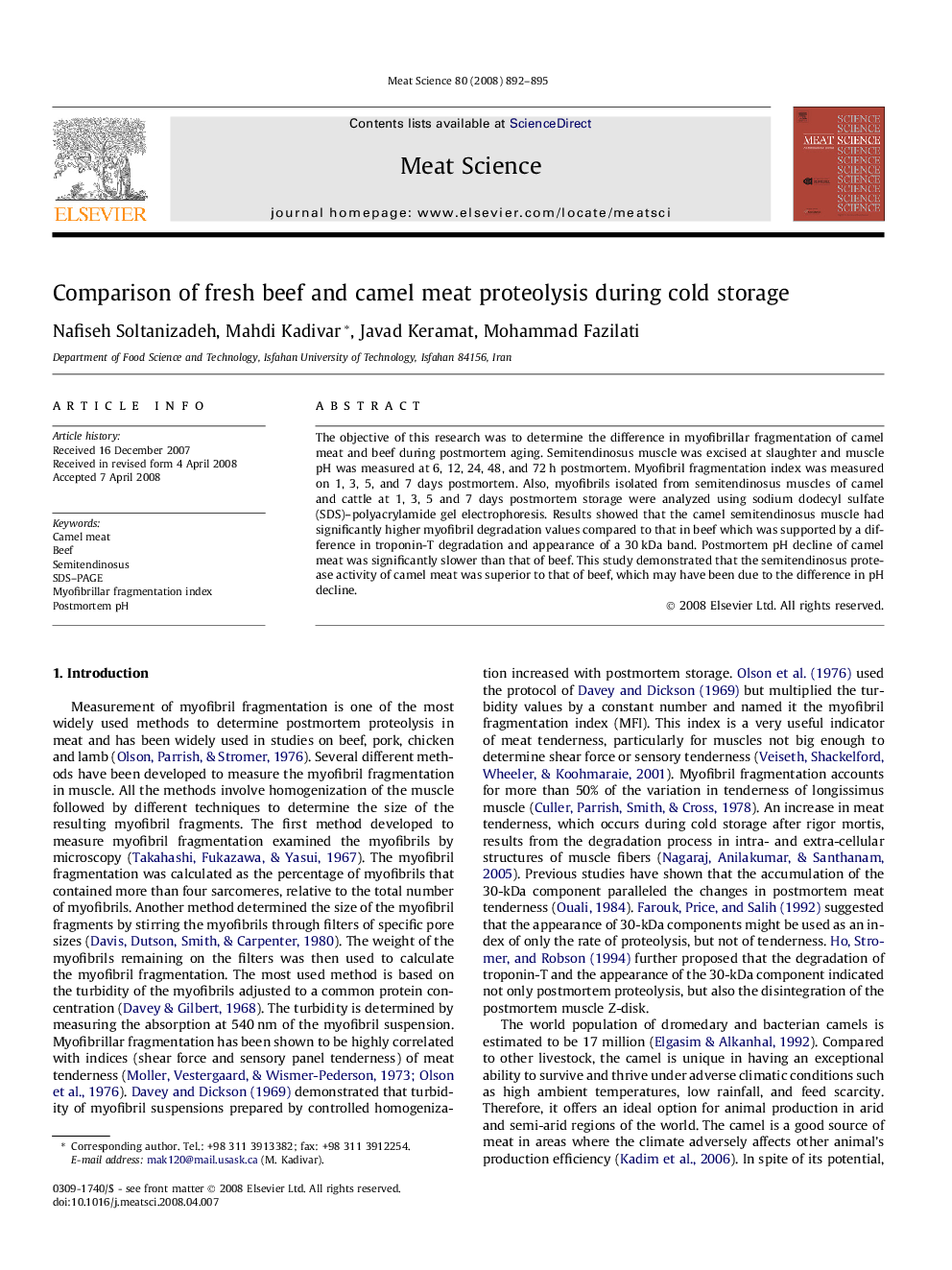| Article ID | Journal | Published Year | Pages | File Type |
|---|---|---|---|---|
| 2451399 | Meat Science | 2008 | 4 Pages |
The objective of this research was to determine the difference in myofibrillar fragmentation of camel meat and beef during postmortem aging. Semitendinosus muscle was excised at slaughter and muscle pH was measured at 6, 12, 24, 48, and 72 h postmortem. Myofibril fragmentation index was measured on 1, 3, 5, and 7 days postmortem. Also, myofibrils isolated from semitendinosus muscles of camel and cattle at 1, 3, 5 and 7 days postmortem storage were analyzed using sodium dodecyl sulfate (SDS)–polyacrylamide gel electrophoresis. Results showed that the camel semitendinosus muscle had significantly higher myofibril degradation values compared to that in beef which was supported by a difference in troponin-T degradation and appearance of a 30 kDa band. Postmortem pH decline of camel meat was significantly slower than that of beef. This study demonstrated that the semitendinosus protease activity of camel meat was superior to that of beef, which may have been due to the difference in pH decline.
